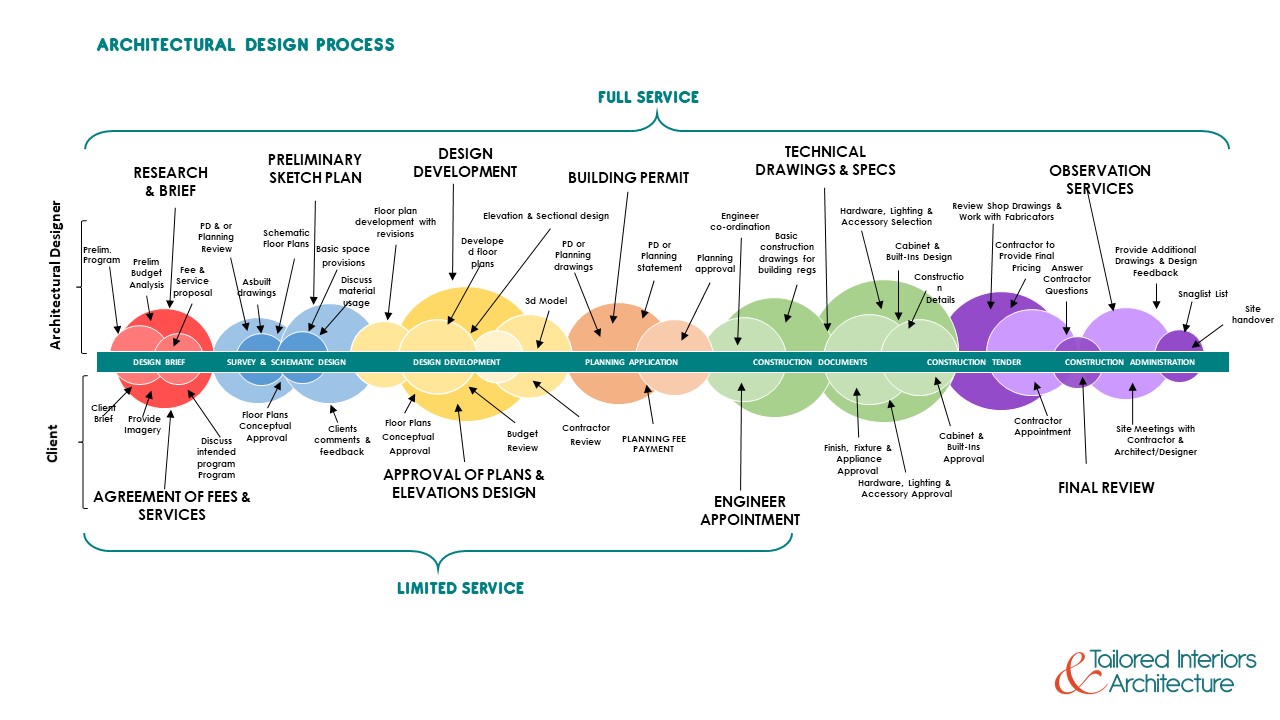

- Architect design process how to#
- Architect design process verification#
- Architect design process code#
- Architect design process series#
Most of the Construction Documents phase involves filling in any of the remaining gaps in information that might prove useful to bidders or contractors as they prepare to construct the building. The drawings produced during this phase are used to bid and, ultimately, construct the project.

The goal of the Construction Documents phase is to accurately and completely document all aspects of the design.
Architect design process how to#
Learn how to coordinate around the Revit model during Design Development > Project Specifications and Materials List Structural, Mechanical, Electrical, Plumbing, and Special Systems DrawingsĤ. Updated Interior and Exterior Renderingsģ. Site Plan, Floor Plans, Interior/Exterior Elevations, Sections, and Reflected Ceiling PlansĢ. Typical deliverables provided at the conclusion of Design Development:ġ. In addition to solidifying the size and location of all rooms, the team also identifies the building’s exterior materials, interior finishes, and all furniture, fixtures, or equipment (FF&E). The primary goal of Design Development is to finalize the overall character of the project and to ensure that the project can be realized at the quality and cost anticipated.ĭuring this phase, the design team produces more-detailed drawings and a set of specifications that outline the size, shape, and character of every component of the project. Learn how the Revit model evolves during the Schematic Design phase > Notice to Proceed (Optional can be provided by the Owner to the design team as an official approval of design work completed to date.) Initial Estimate of Cost (Optional an estimate of cost can be generated by a third-party estimator hired by the Owner, by a contractor working with the design team in a design-build capacity, or by a Construction Manager within a CMAR delivery method.)Ħ. Building System Narratives (Structural, Mechanical, Electrical, and Plumbing)ĥ. Site Plan, Floor Plans, and Exterior ElevationsĤ. Typical deliverables provided at the conclusion of Schematic Design:ġ. Once the client reviews and approves the preliminary design, the design team proceeds to the next phase. These initial drawings or models help the design team to communicate ideas to the owner and to illustrate how different spaces might be configured within the building, how the building might sit on the site, or how the building might look and operate.
Architect design process series#
The primary goal of the Schematic Design phase is to begin to identify the general character of the building and its systems.ĭuring this phase, the design team produces a series of sketches, physical models, and initial renderings of the building in order to evaluate various ways the project might respond to the constraints and goals identified in the Pre-Design phase. Learn how the Revit model begins to take share in the Pre-Design phase > 2. Owner-Architect Agreement ( AIA B101, or similar)
Architect design process verification#
Program & Project Scope Verification Document (aka Room Data Sheet)ĥ.
Architect design process code#
Zoning & Preliminary Building Code AnalysisĤ. Site Survey (Showing topographic information, existing structures, utilities, etc.)ģ. Typical deliverables that are obtained or produced at the conclusion of Pre-design:ġ. This initial information gathering effort helps the design team clarify the possibilities and constraints of the project and to establish initial goals for the design. They will also work with the owner to clarify how the spaces in the building will be used.Īdditionally, they will perform a comprehensive review of all applicable zoning ordinances or restrictions pertaining to the development of the project. The primary goal of this phase is to acquire a comprehensive understanding of the constraints of the project and to construct a plan for the project’s execution.ĭuring the Pre-Design phase, the design team will evaluate the site that has been identified for the project. The initial phase of the architectural design process is known as Pre-Design or Programming. While each architectural project is different, we’re going to use a new construction project as the basis for this guide. In this article, we’ll clarify the five key phases of the architectural design process.Īre you a building owner looking to engage an architect? Or perhaps you’re new to the profession or just curious about what architects do? Here’s brief guide to help you understand the who, what, and how of the architectural design process.įor each of the five phases of the architectural design process, we’ll discuss the overall goals of the phase, the scope that the architectural design team is responsible for, and the deliverables that move the project forward.


 0 kommentar(er)
0 kommentar(er)
